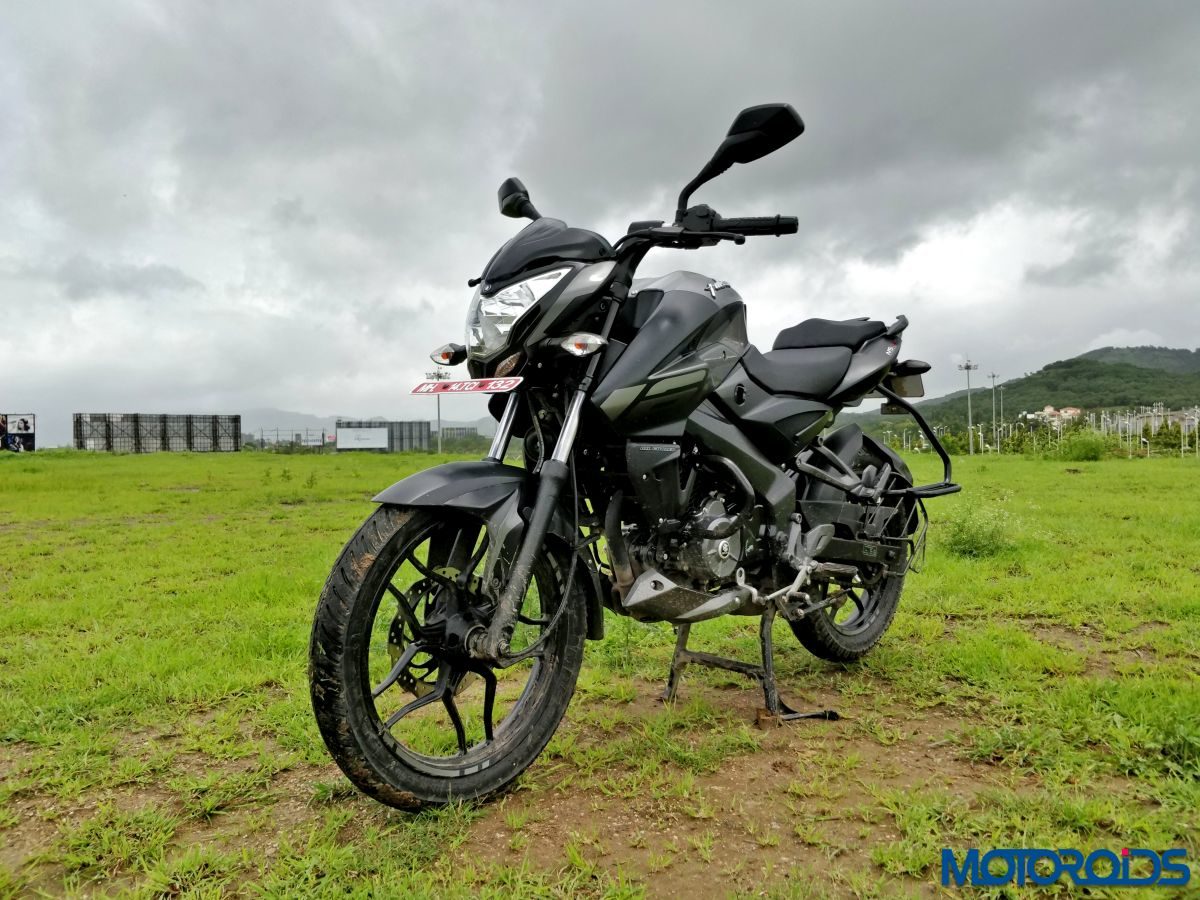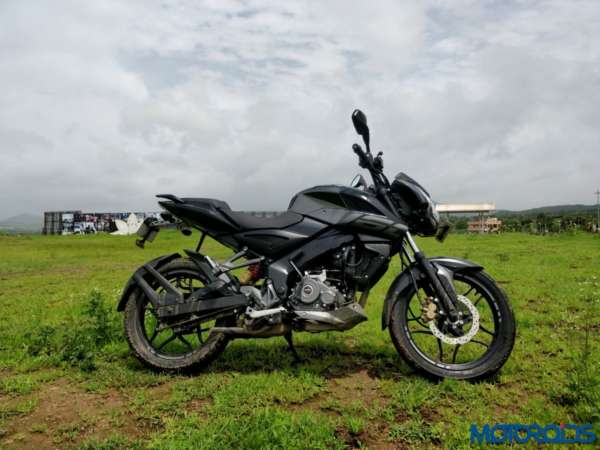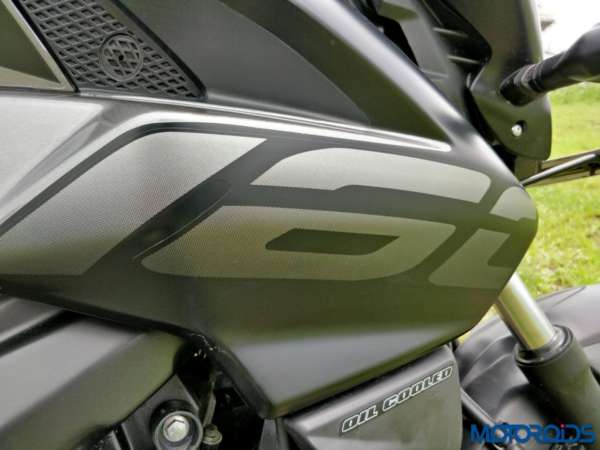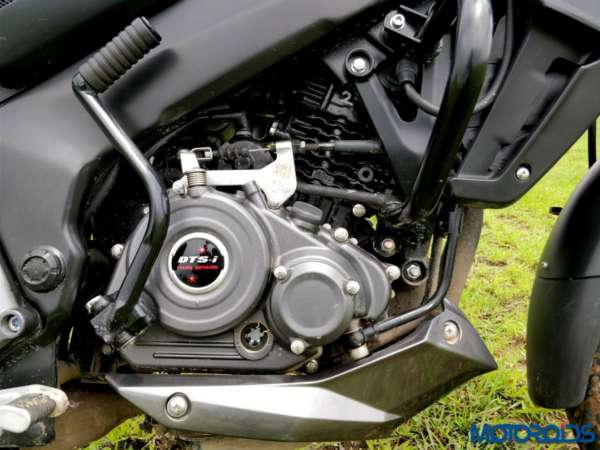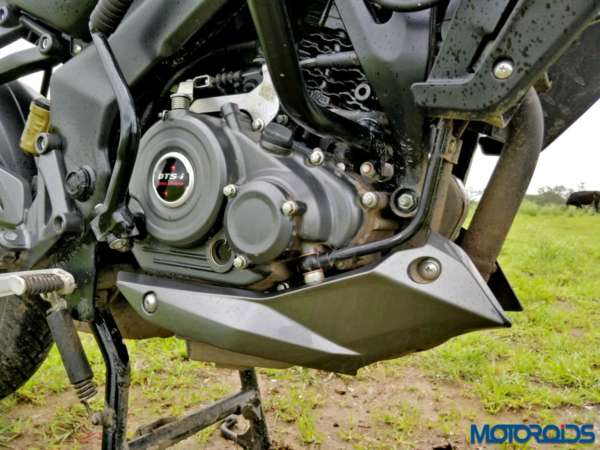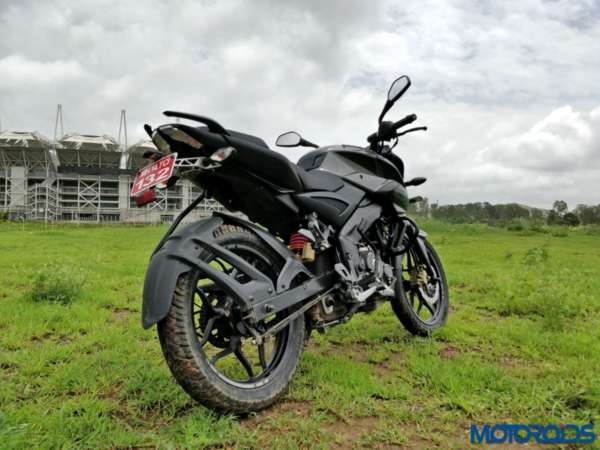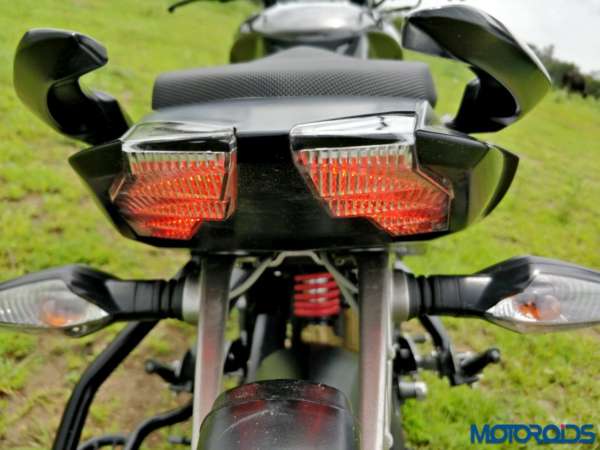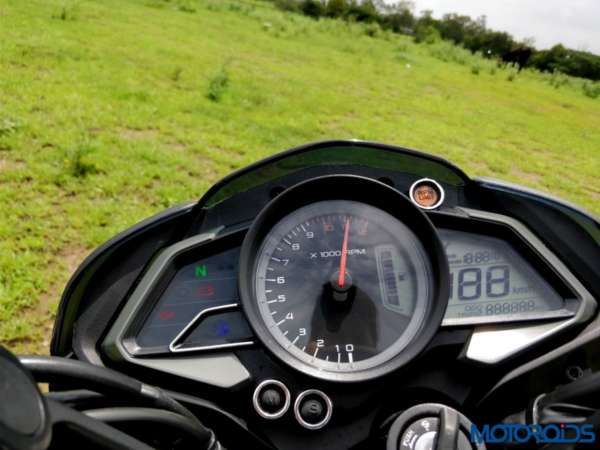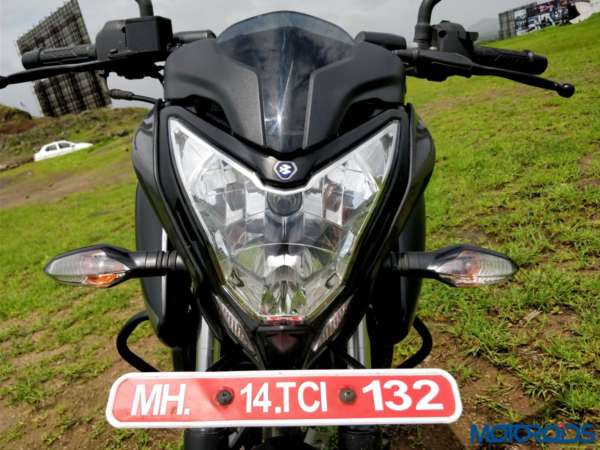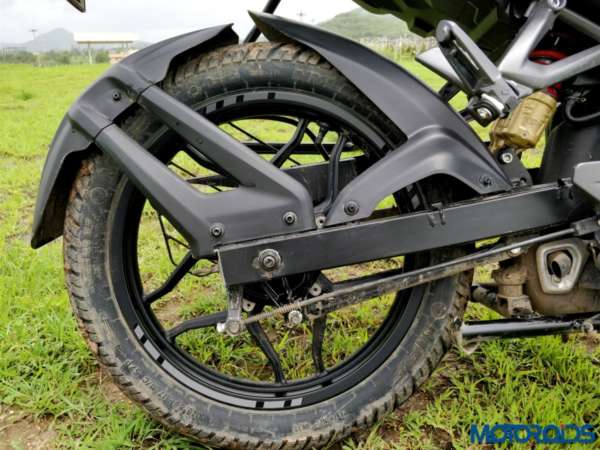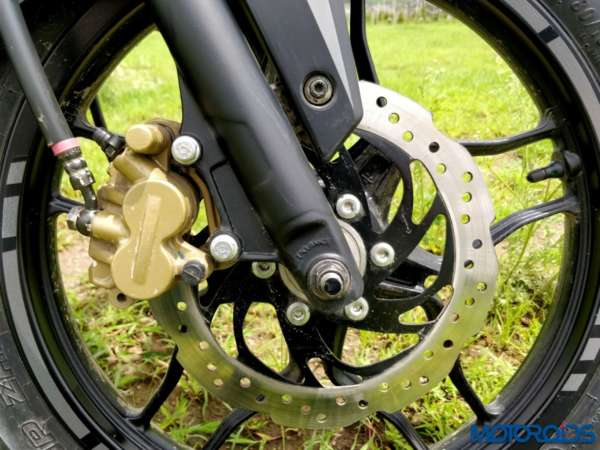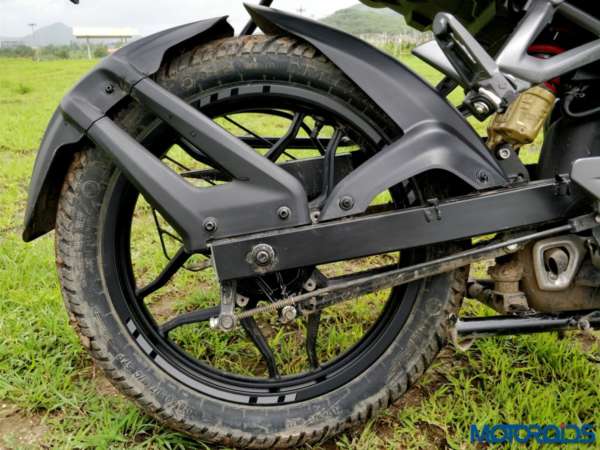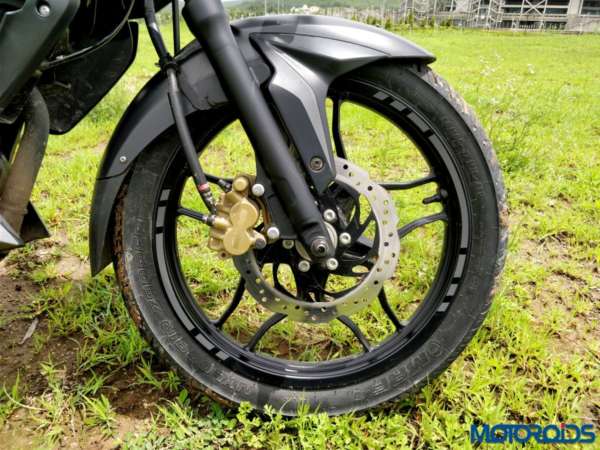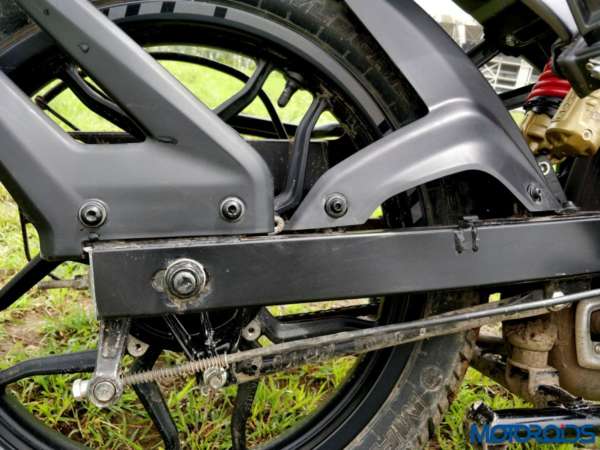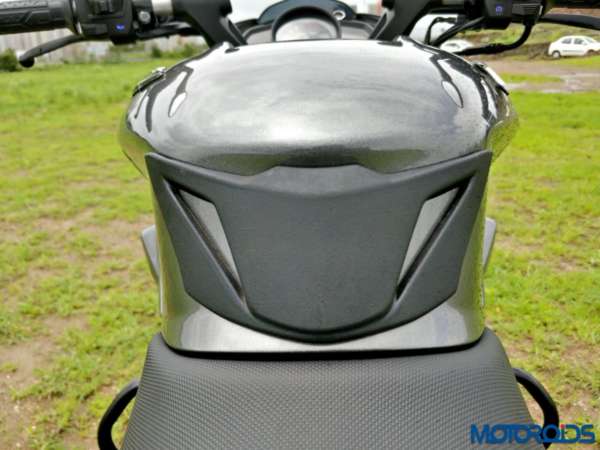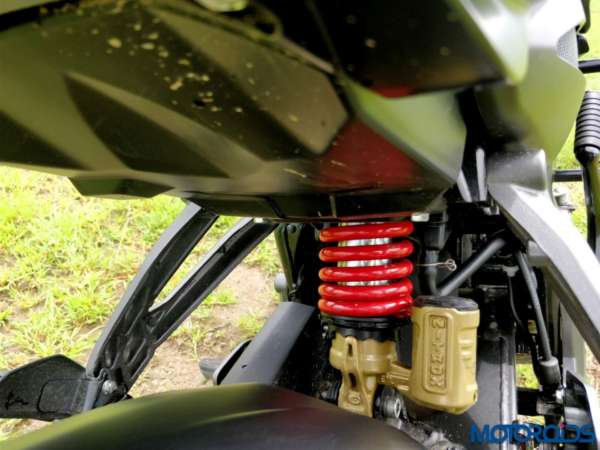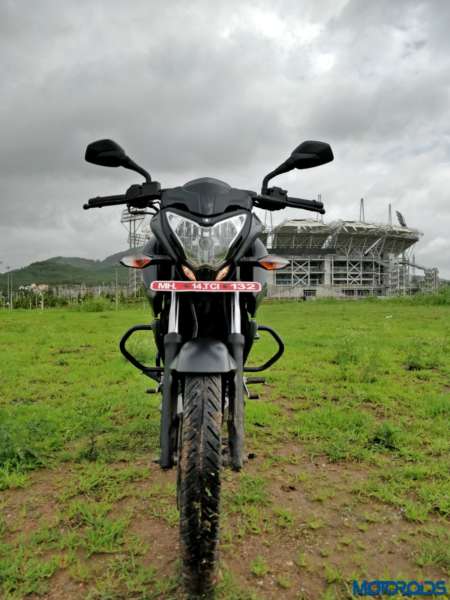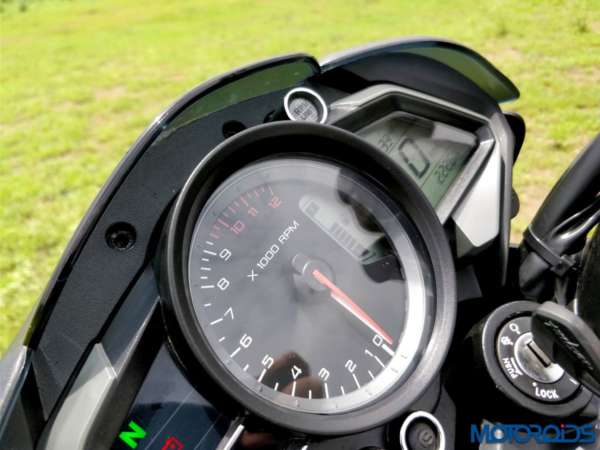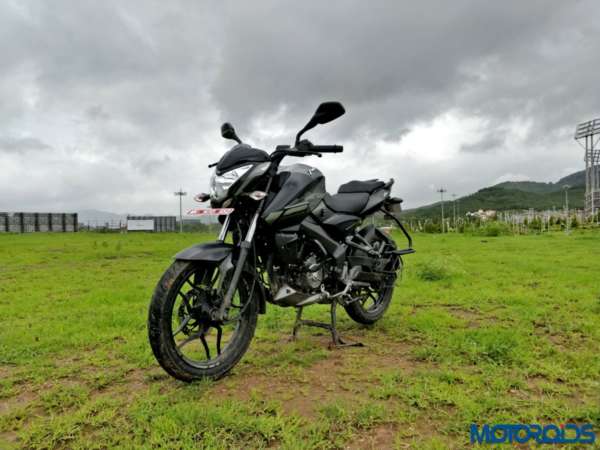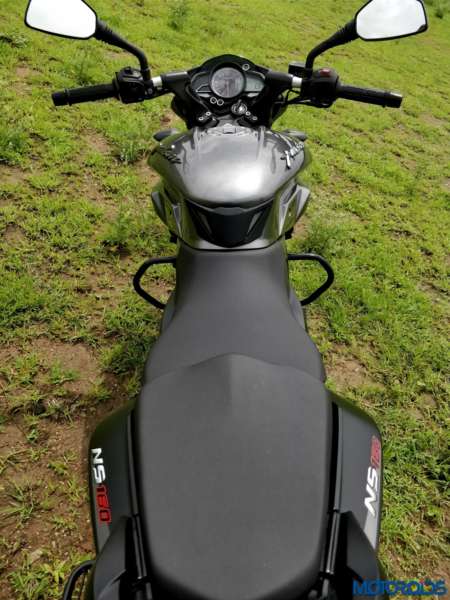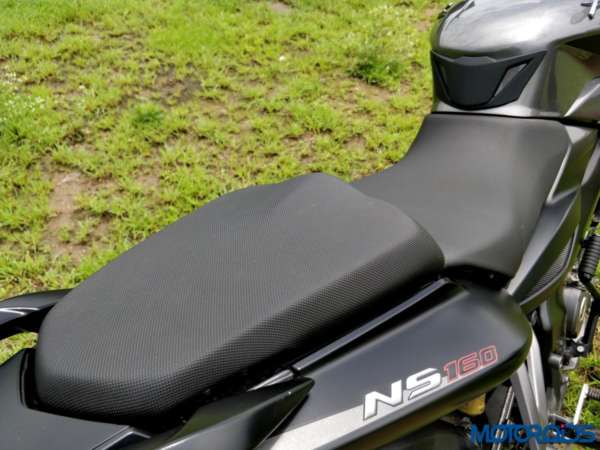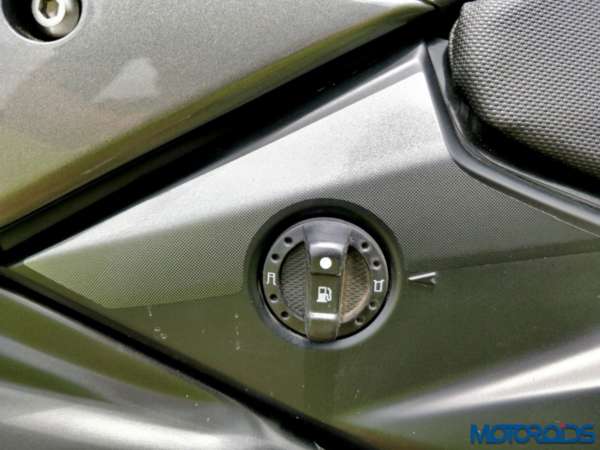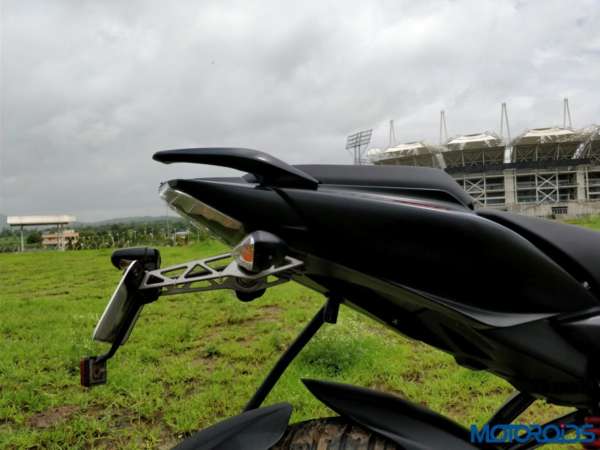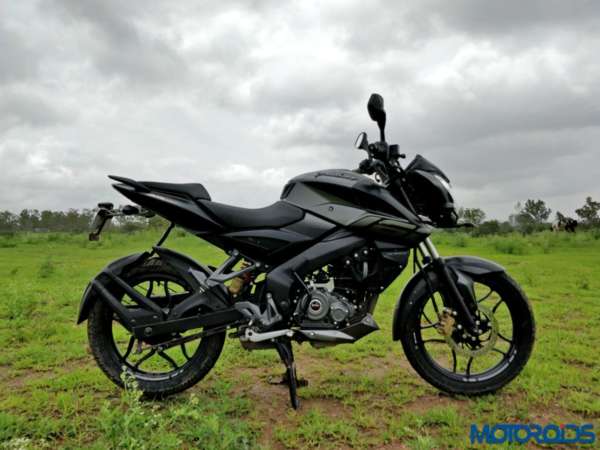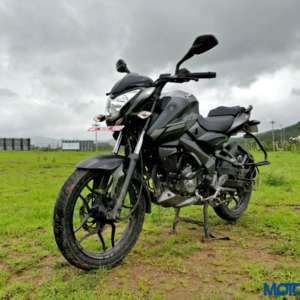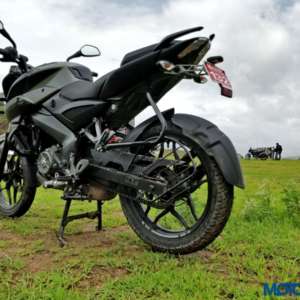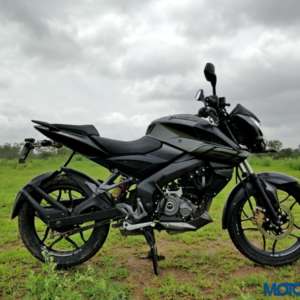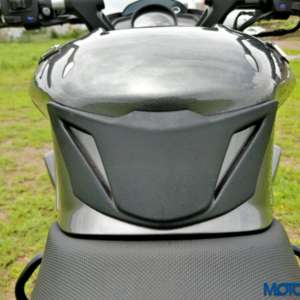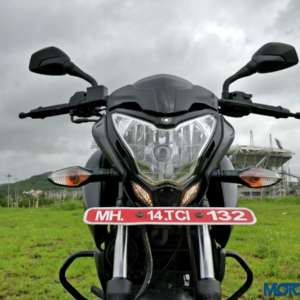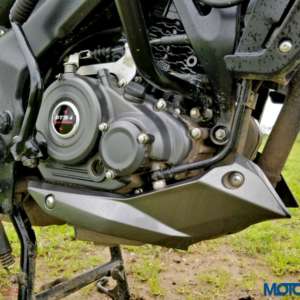We rode the new Pulsar NS 160, and were surprised by its linear, smooth character and it’s uncanny similarity to the bigger, more expensive NS 200. Is it too much of a good thing to believe? We try and find out in this first ride review of the newest Pulsar on the block.
So what exactly is the Pulsar NS 160? Will it replace the Pulsar 150?
Hell no! Bajaj Auto has been posting strong numbers for the Pulsar 150 – close to 30,000 units a month. They’d be out of their minds if they entirely replace a model which is doing so well and leads a very lucrative segment. The Pulsar NS 160, however, will fight it out in a slightly premium category which comprises newer models with slightly better performance, more modern tech, snazzier looks and of course a higher price point. This segment is comprised of the likes of the Gixxer, Apache RTR 160 and the FZ.
To achieve this, the Pulsar NS 160 gets a new engine, 4 valves, a modern perimeter frame, mono-shock rear suspension, Bajaj’s triple spark tech and of course a much more modern styling. It may eventually be the de facto entry-level Pulsar in coming years, but for now, it’s going to expand Bajaj’s market in a category where they don’t have a real contender rather than replacing a product in the category they already lead.
Alright then, tell me about the engine and other key mechanicals
Well, the engine here is brand new in the sense that it has not been presented with this displacement before. It’s the same block that was used in the now discontinued AS150, but has a bigger bore and stroke. The displacement here is 160.3cc in a single cylinder format with 4 valves and oil-cooling. The motor is mated to a 5-speed transmission and churns out peak power rated at 15.5PS@8500 rpm and peak torque rated at 14.6Nm@6500 rpm.
Those are good numbers for the segment. On paper, no other 150-160cc motorcycle produces as much power, with the RTR 160 coming second at 15.2 PS, though its torque is rated much lower at 13.2Nm. The CB Hornet dishes out 0.1 Nm more torque, which is an insignificant advantage, really. So in terms of specs, this machine is right up there in the segment it competes in.
The Pulsar NS 160 also boasts the longest wheelbase in the segment, although it’s still the shortest machine of the lot. That wheelbase offers this bike some solid straight line ability, though the highest saddle height in the segment somewhat offsets the advantage with a relatively high seating position and resultantly a mildly higher centre of gravity.
What bits does it share with the Pulsar NS 200?
A whole bunch of them! In fact, the upper body of the NS 160 is exactly the same as the 200NS, though there are a lot of changes below the torso. Apart from the smaller engine, most of the un-sprung components are different from the Pulsar NS 200. The front suspension isn’t as meaty as the bigger NS. The wheels are similar in design, but are skinnier to accommodate narrower rubber (110 section rear, 90 section front). The rear monoshock looks very similar to the 200, but is technically different with different ratings for the spring and damper. Also, the swing-arm here is less meaty as compared to the bigger version. The 280mm disc from the 200 is replaced by a smaller 240mm unit up front, while the rear 230mm disc on the bigger machine gets replaced by a 130mm drum here.
Up top, however, everything is the same. The instrument console, the riding position, everything is the same except for the 160 stickering replacing the 200 branding and some minor differences in graphics. The fuel tank, with 12-litre capacity, could have been bigger though.
While the machine looks dashing and almost indistinguishable from the NS 200 when looked at side-on, dead front and rear view is a little underwhelming owing to the skinnier forks and tyres.
The 160NS will be available in three colours, including the grey hued machine you see here in these images.
Let’s talk about the performance and feel of the bike
The one outstanding aspect about the NS160 is its vibe-free nature. We were pleasantly surprised with a total lack of vibrations on this one, which is saying something for a Bajaj motorcycle. This has to be one of the smoothest motorcycles from the Bajaj stable, with only mild pulsations emerging on the foot-pegs after the bike breaches the 9500 rpm engine speed. Here too, there’s nothing perturbing, just a very mild sensation. It still has that very BAJAJ engine and exhaust note to it, which sounds nice and eggs you on to rev the engine harder.
Bajaj has tuned the new engine to deliver well on low to mid range, without leaving the top of the barrel empty either. It’s a very linear, progressive engine with good performance across the rev band. It pulls well from low engine speeds and builds power as the engine speed increases, all the way up to its 10,500 rpm redline.
We exhaustively tested the bike for its low, mid and top engine speed performance and the NS 160 impressed. The motorcycle would roll without spluttering beyond 2000 rpm, unless you’re in top two gears. 3000 rpm onwards, you could clearly feel the torque building up and the engine beginning to pulling with ease, feeling smoother. The power builds properly at around 6000 rpm, beyond which the bike accelerates cleanly until the limiter cuts in, with the amber coloured RPM Limit light coming on.
For a 160, the performance on tap is very usable across the band. It’s a versatile engine from a performance perspective, and for its segment should be suitable for daily city commuters as well as the odd trip out of town.
The top speeds attained in various gears (speedo indicated) are provided below. Please note that there is about a 10% error on the speedo:
1st Gear: 42km/h
2nd Gear: 64 km/h
3rd Gear: 88km/h
4th Gear: 108km/h
5th Gear: 125km/h
The bike felt solid despite its narrow tyres and came across as a taut, well put together machine during the course of the test. The suspension is adjustable at the rear, though we found the ride to be slightly on the firmer side.
During the test run, the tarmac around the outer suburbs of Pune was wet with fresh showers, and we were, at the outset, a little sceptical about the performance of the tyres in the slippery conditions. The MRF Zappers however performed satisfactorily and responded well to leaning and aggressive braking over damp black-top.
Around the bends, the bike felt connected, sharp and engaging when leaned over. For the segment it resides, we think that the performance and handling of the bike is satisfactory though it wouldn’t have hurt to have slightly chunkier tyres. The clip-ons and a moderately aggressive riding position helps when you dip the machine in and move your behind around. We liked what we experienced for the class of motorcycles this machine represents though.
While the braking felt adequate with sufficient bite and feedback, we hear that Bajaj may soon introduce a rear (optional) disc brake on the model to satisfy those who’re looking for more stopping power at the rear.
Here’s a look at the motorcycle through some images:
The front and rear tyres of the Pulsar NS160
The swing-arm is smaller than its elder sibling, the NS200
The Pulsar NS160 comes with a tank pad available as a standard feature
The rear mono-shock suspension looks similar to that of the NS200 but remains to be technically different
The front forks on the Pulsar NS160 are not as meaty as the NS 200
The instrument console features an analogue tachometer with a digital fuel gauge at the centre. To it’s left are the tell-tale lights and to it’s right is the speedometer and tripmeter.
The motorcycle gets a main stand indicating its commuter friendly positioning
The seat height is highest in the segment
The step pillion seat is not the most comfortable in its class
The fuel petcock on the Bajaj Pulsar NS160
The NS160 looks appealing although the tyres look disproportionate when seen from the front or the rear.
What are the negatives about this one?
To start with, the saddle height may not suit everyone – it’s the tallest in the segment.
The tyres are pretty good for everyday use and the odd trip to the twisties, though they cannot be taken to the limit. You’d do well to have wider, stickier rubber there – both for better control, as well as to lend better proportions to the machine.
The pillion seat is step-type, not the most comfortable for two-up riding.
Except for these, it seems like a great product – priced well, covers most bases, looks good, equipped well and performs well.
So what’s the verdict?
The NS 160 surpassed our expectations in areas such as refinement and versatility as far as the engine is concerned. It comes across as a solid performer with great styling, great performance, good equipment at an aggressive price point. We think this one’s a pretty solid offering. Unless you are looking for a specific brand or some other very specific feature, or are too short, you should definitely try this one before making a buy. We’re sure you’d be as surprised as we are!
Price: 78,368 (Ex-Showroom Delhi)

